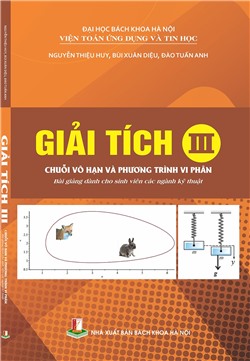Cẩm nang thi Đánh giá Tư duy
1249 lượt mua
Hotline Bán hàng:
0985694099Hotline :
024 38684569Năm xuất bản sách giấy: | 2024 | Năm xuất bản sách điện tử: | |
Khổ sách: | 19 x 27 | Số trang: | 368 |
Quốc gia: | Việt Nam | Ngôn ngữ: | en |
Mã ISBN: | 978-604-488-627-5 | Mã ISBN Điện tử: | |
Loại sách: | Sách giấy | Nhà xuất bản: | Nhà Xuất Bản Bách Khoa Hà Nội |
Cuốn sách này trình bày phần Động học của môn Cơ học Kỹ thuật 2 dành cho chương trình nâng cao tại Đại học Bách khoa Hà Nội, được viết hoàn toàn bằng tiếng Anh. Nội dung sách được chắt lọc từ một số tác phẩm nổi tiếng của nước ngoài, cũng như sách của GS. Đỗ Sanh và GS. Nguyễn Văn Khang, những tài liệu đóng vai trò là nền tảng cho Cơ học Kỹ thuật. Do đó, cuốn sách có thể hữu ích không chỉ cho sinh viên mà còn cho những độc giả quan tâm đến Cơ học Kỹ thuật.
Nội dung về Động lực học/Kinetics bao gồm mười chương.

Cẩm nang thi Đánh giá Tư duy
1249 lượt mua

Thiết kế IC tương tự
272 lượt mua

99 Bài tập Học thuyết giá trị thặng dư
210 lượt mua

Hóa học cấu tạo chất
123 lượt mua

Cẩm nang thi Đánh giá Tư duy
11397 lượt xem

Giải tích I
4843 lượt xem

Giải tích III
3265 lượt xem

Thiết kế IC tương tự
3118 lượt xem

99 Bài tập Học thuyết giá trị thặng dư
2581 lượt xem
Bình luận